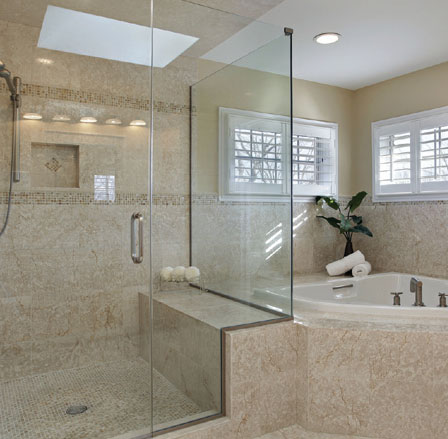The Art of Aging Well
We provide customized hourly and around-the-clock care to older adults so they can live happier, healthier lives at home.
Download
Most people prefer to age in place. If you have a beautiful and gracious home that you love, why leave it? Yet common features in many homes - steep stairs, “classic” plumbing fixtures, even hardwood floors - can actually make life less comfortable, or sometimes even dangerous, as we get older.
Fortunately, we now have many attractive home decor options that are also age-friendly. If you’re remodeling a home, putting a little thought into your likely future needs and planning for them can save you the hassle, expense and possibly a trip to the emergency room!
The combination of water and tile makes a bathroom an inherently hazardous place, even more so for someone with weakening balance, vision, or flexibility. Yet the sleek, modern aesthetic that is so popular now with polished and lacquered mink floors and minimalist surfaces can be extremely age-friendly. Sink fixtures with a single lever to control both temperature and flow are much easier to use for someone with arthritis than a traditional faucet with two knobs, one for hot and one for cold. Shower enclosures separate from the bathtub not only look more elegant, but also eliminate the need to step over a barrier to enter or exit. And modern toilets not only stand higher off the floor, but also use less water per flush.



Before jumping into a bathroom remodel though, here are the top things to consider for enhancing both aesthetic appeal and comfort:
After the bathroom, the kitchen is the room that requires the most modification to make it fully accessible. Lower-than-average countertops (to accommodate a wheelchair user) and an electric rather than gas cooktop (to avoid fire risk) may not be design decisions you want to make. Yet certain things that will keep your kitchen usable as you age also make it more convenient now, for instance:


One easy way to ensure a home is comfortable for years is to make sure you have excellent lighting built in via wall sconces or ceiling fixtures. This saves older eyesight and minimizes the number of standing lamps, whose trailing power cords can create a fall risk. Don’t forget about lights in closets.
Consider designing 36-inch interior doorways rather than the standard 32-inch ones and make sure door hardware is levers rather than round knobs for ease of grip. If possible, eliminate thresholds. If you ever need a wheelchair or a walker, you’ll be able to move easily around your home.


If you have a multi-story home, do you have a place for an elevator? If you don’t need it now, you could make this space a coat closet on the lower floor and a storage closet on the upper floor, but have an easy modification should you need it later. You might also place your luxurious master suite on the ground floor of your new home, with children’s or guest rooms upstairs. Be sure that any stairs at your entryway or within the home have handrails to help those who are a little unsteady on their feet.
Home controls, intercom systems and built-in security systems hardwired to police or fire stations allow you access and control from anywhere in the home and keep you safe in an emergency. Today it’s a convenience to see who’s at your door from anywhere in the house; tomorrow it may be a necessity.
For ideas to inspire your accessible home design, check out Pinterest boards for Aging in Place.